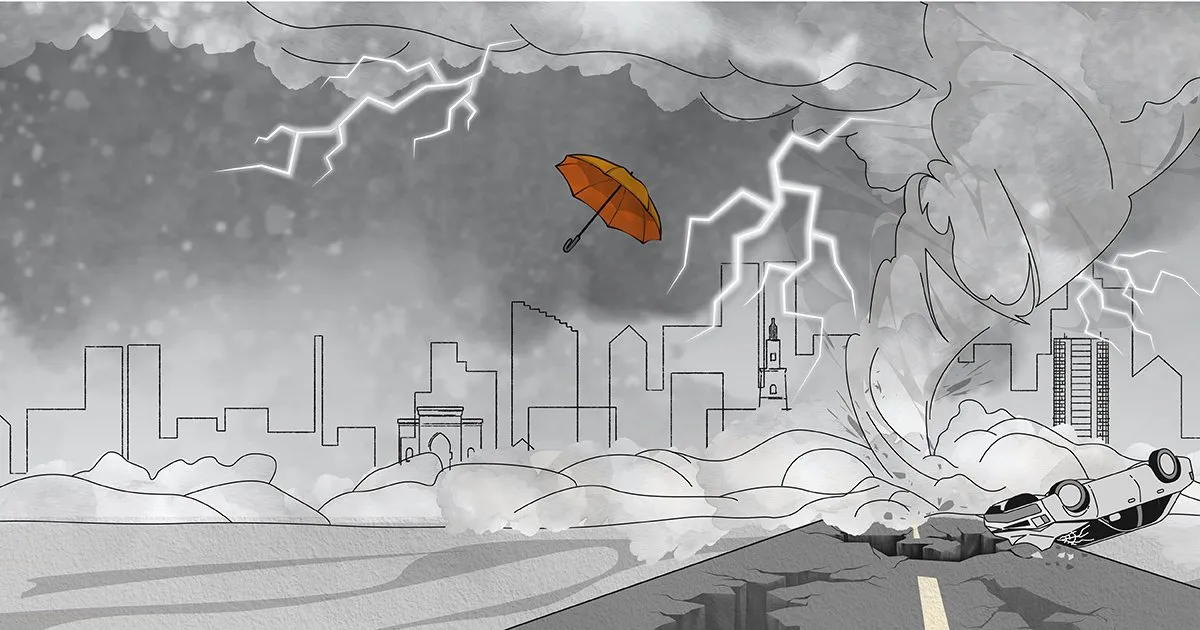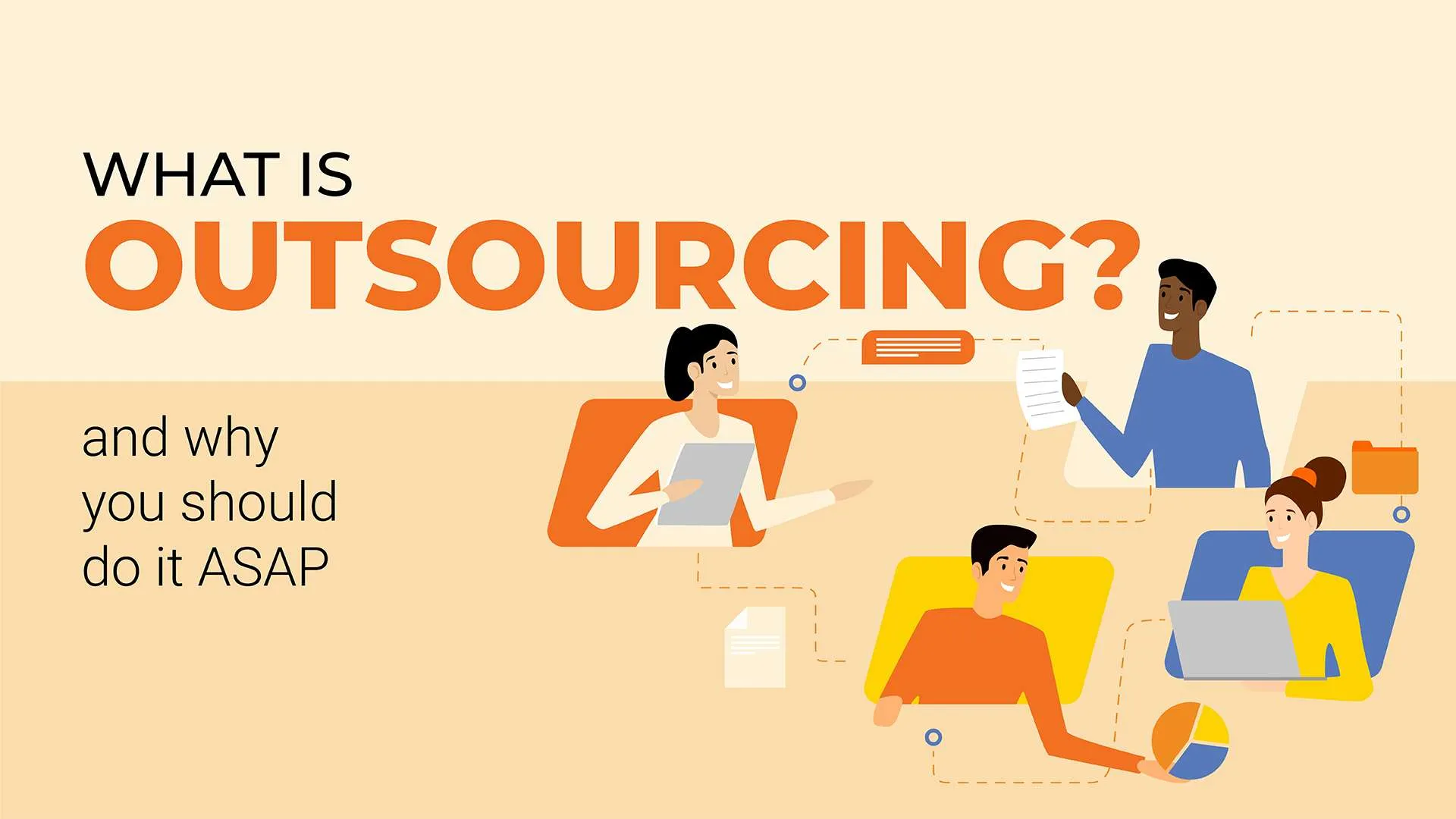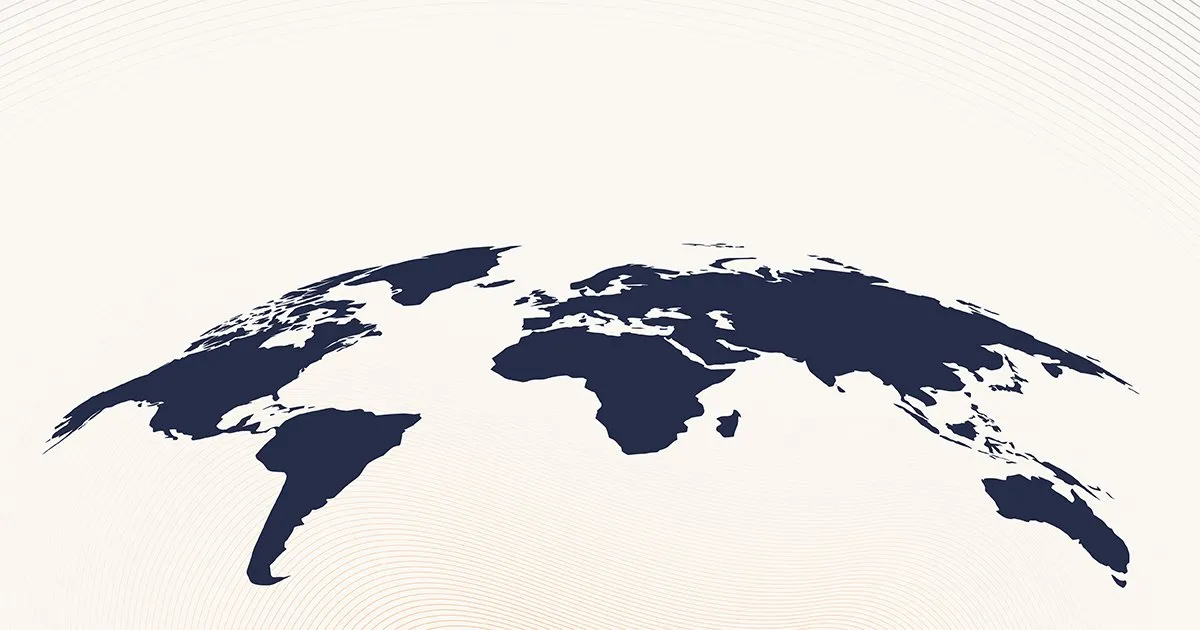As Hurricane Ian, a Category 4 tropical cyclone, swept through Florida, leaving a trail of devastation in its wake, we were once more reminded that a natural or unexplained disaster can change everything in the blink of an eye. While the primary thought should be for our personal safety and that of our loved ones, it is also important to consider what structures or processes a company should have in place when disaster strikes.
Examples of disasters a global business could face
In the broader sense of the word, a disaster can take many shapes and occur anywhere. If your business has a global or multi-jurisdictional footprint, then disasters are par for the course. Companies that choose to outsource key aspects of their business, do so in multiple locations for redundancy to accommodate for the reality of disasters. Let’s take a look at what constitutes a disaster in the context of this article.
Natural disasters
Natural disasters include severe weather storms, lightning, gale force winds, earthquakes, landslides floods, etc. While insurance companies refer to these unforeseen events as acts of God, and have incorporated clauses to safeguard the finance industry against claims resulting from them, it is important to understand what impact it could have on a business.
This was experienced by our teams in Mexico who were put to task earlier this year when they experienced three earthquakes within the span of a week. And with a series of storms creeping towards the Philippines, locals are bracing themselves for a challenging time as 2022 draws to a close. As a result, the Boldr offices in Tacloban and Manila are on high alert.
The Philippines is not only a major business process outsourcing (BPO) destination, but it is also prone to tropical storms and erratic weather, like typhoons and cyclones, which is one of the reasons why it is ranked 8th of 181 countries on the 2021 World Risk Index (WRI). In calculating a country’s placement on the WRI, the report seeks to measure social protection in crises and disasters through the following components: Risk, Hazard/Exposure, Vulnerability, Susceptibility, Coping, and Adaption. This measures a country’s likelihood of meeting disaster, as well as their ability to recover after said disaster.
Political strife and civilian unrest
A country can dance on a knife’s edge for decades while politicians battle out their egos in parliament, but political strife or civilian unrest can show its ugly face in a flash. Whether in the form of a military coup, cultural conflict, governmental ineptitude or a combination of internal or external factors, the result can be a nightmare for inhabitants, and have a long-lasting impact on businesses.
The 2021 ransacking and plundering of malls and businesses in Durban, South Africa, is a prime example of how quickly things can escalate or get out of control. Mid-pandemic, the frustrations of locals soarded, further fuelled by corruption in government ranks, economic inequality, as well as the ongoing court proceedings of former President Zuma. It reached a climax when locals began rioting and looting in the KwaZulu-Natal province. The end result was 354 fatalities and massive business closures, with extended food shortages, financial implications (estimated at $3.4bn) and supply chain disruptions that lasted for months.
Other disasters or tragedies
Sometimes disaster comes in unexpected ways. Nothing better illustrates this more appropriately than the 2020 warehouse explosion at the Port of Beirut in Lebanon, which not only left 300,000 people homeless, but resulted in $15bn in damages. Terror attacks, tragedies resulting from incompetence, as well as construction or transport system incidents, like plane crashes or train derailment accidents, also form part of this grouping.
In 2017 an unprecedented firestorm blasted through the Garden Route in South Africa, razing nearly 1200 structures around the town of Knysna and destroying 15 000 ha of forest. Later that year, the subsequent wildfires in Portugal and California in the USA, renewed a global concern to align disaster management protocols and to enforce preventative measures, such as early fire warnings systems, mandatory firescaping and eliminating invasive alien vegetation.
What can businesses do to prevent or minimize catastrophes?
Business continuity is essential. However, during a disaster, continuity can be a luxury. There’s not much that can be done for a business as an entity. Sometimes a localized calamity can be so encompassing, especially where the business is at the epicenter of the disaster, or at the geographical location where a severe storm makes landfall, that the company’s demise is unavoidable. For that, there is insurance.
Humanizing disasters
BPO employees often get the short end of the stick, particularly because outsourcing is more active in developing nations that are more vulnerable to risk factors. The types and significance of social protection systems rated in the WRI, as defined by the International Labor Organization (ILO), include employee benefits, access to essential goods and services, risk prevention and protection, as well as promotion of chances and opportunities. This is why social protection forms part of disaster management.
In an effort to anthropomorphize disasters, it is vital to consider the consequences on a company’s employees, their immediate families, as well as the local community where they are established. This will enable companies to relook its practices and to create favorable conflict resolution scenarios, no matter how tragic or severe they may be. This extends to disaster management initiatives.
No two disasters are ever the same, even if it is a typhoon that hits the same area 20 times a year. Similarly, no two companies can ever have the same Business Continuity Plan (BCP). While certifications are a guide and format in writing, it is ultimately the company vision that dictates the BCP direction. In Boldr’s case, our BCP was written with our Community, Company and Client concepts in mind. These emphasized a more human-centric approach. Our B-Corp certification further mandates us to make decisions around the safety of our teams.
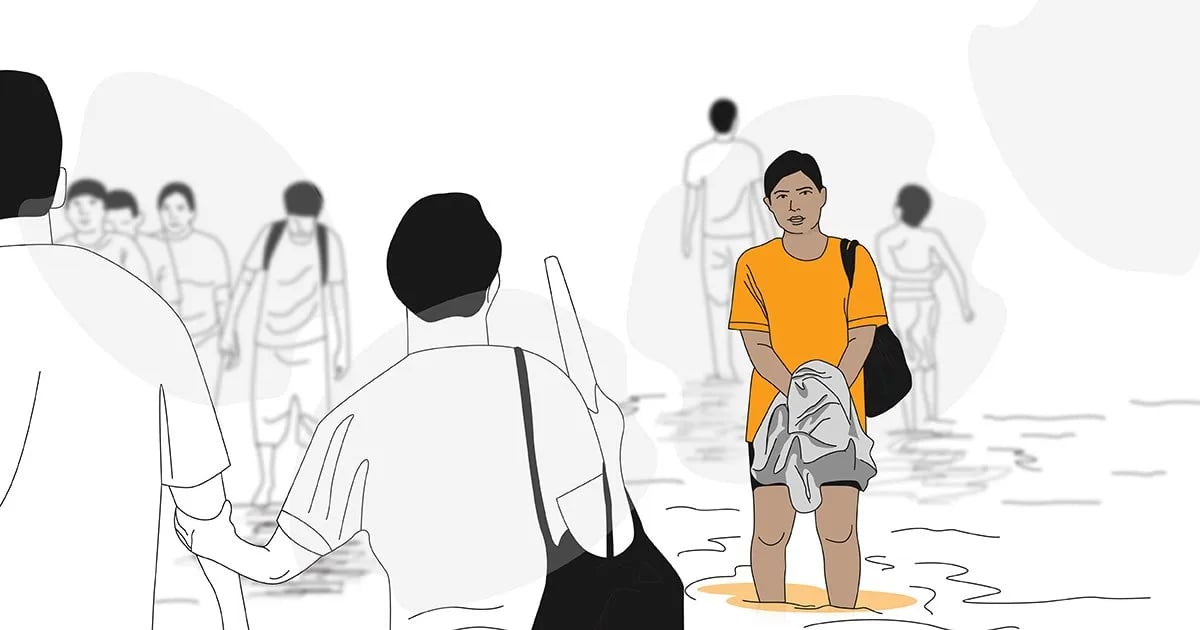
Check-in and people tracking
Following on from the above, humanizing disaster management processes will make employee safety and whereabouts task number one for a company’s personnel managers, operation managers, health-and-safety officials, etc. After all, human capital is the lifeforce of any business. What good is it for a company to survive a disaster, but their entire workforce is MIA.
Establishing a dedicated check-in system will encourage companies to put their employees first, while ensuring that those tracking employee well-being will better track their teams. Essentially, this will facilitate a more streamlined return-to-business procedure.

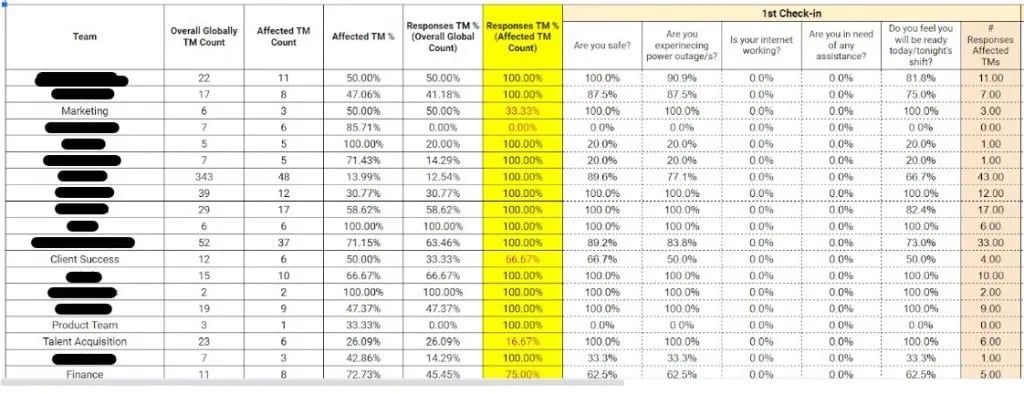
Examples of Boldr’s Team Member check-in and tracking during disasters
Support systems
Knowing where your team members are and what their circumstances are, will enable teams to plan for additional support. This could mean personal or operational support, like IT assistance for those who are unable to operate remotely once the initial threat is no longer there. At Boldr we have incorporated this process as a means to see where we can assist our team members who are experiencing challenges.
Stay Updated
Keep your teams up to date with the latest developments or industry regulations pertaining to disaster or risk management. The Boldr operations team began by attending multiple online courses on risk management and disaster preparedness. Eventually, as the team grew, we also became certified with compliance certifications, like Occupational Safety and Health, First Aid Training, Risk Management, and Knowledge Management.
Client Communication
In the BPO industry, clients are often on the other side of the world. It could be that they only become privy to current affairs in the aftermath of the disaster. It is important to determine coverage during this time. Informing clients about the disaster and the resultant impact it had on the teams they rely on will aid in business continuity. Not only can clients adjust responsibilities where required, but they can prepare or supplement the customer experience accordingly.
Debriefing
Post incident reporting and debriefing is essential to appreciate the wins and losses of disaster management. It helps with future planning during incidents of similar or greater magnitude. Our business continuity plan (BCP) and disaster recovery plan (DRP) are ever-changing processes that are largely dependent on incident learnings.
Redundancy
From the perspective of engaging an outsourcing partner, creating talent redundancy can be a highly effective way of spreading risk across different countries. This might not fully disaster-proof your business, but it could enable teams in the affected area to be replaced by teams in an unaffected region, thereby ensuring business continuity while efforts are underway to stabilize disruption to the business.
Disaster-proofing with a conscience
Because we advocate ethical outsourcing, we believe that anthropomorphizing a business is the first step towards preparing a business for any type of adversity. Challenges will come. They always do. But when they come, it is better to weather the storm as a team.
Our team members are not AI apps, but human beings. They often have dependents and form part of a larger community that is reliant on their ability to provide for themselves. That is why we have incorporated community impact initiatives into our disaster reporting process, to see where we can assist the local community to return to normal, or at the very least to re-establish itself.
We love sharing with others, so if you are looking to outsource or want to know more about how to bolster your company against risk factors, make contact with us here.
James Fouche is a Content Writer at Boldr, an author and a columnist. He is passionate about sharing his love of reading and writing with others.
